Have you ever wondered, why do dogs have wet noses? This intriguing question not only sparks curiosity but also reveals fascinating truths about our furry companions. Dogs’ noses are often moist and cool, a characteristic that plays a crucial role in their health and behavior. But what causes this unique trait? In this blog post, we will uncover the science behind wet noses in dogs and explore why it is essential for their well-being. You might be surprised to learn that a dog’s nose can actually detect scents better when it’s wet! This fascinating fact leads us to ponder: Is your dog’s wet nose a sign of happiness, or does it indicate something more? Join us on this captivating journey to discover the hidden meanings behind your dog’s wet nose and how it impacts their life. Whether you are a seasoned dog owner or just starting your journey with a new puppy, understanding the importance of a dog’s wet nose will enhance your bond with your beloved pet. So, let’s dive into the world of canine noses and explore this essential aspect of dog health and behavior!
The Science Behind a Dog’s Wet Nose: Why Does It Matter?

Have you ever wondered why dogs have those adorably wet noses? It’s one of those little mysteries about our furry friends that many people don’t think about. But there is actually a fascinating science behind it that not only explains why their noses are wet but also reveals why it matters for their health and communication. Let’s dive into the intriguing world of canine noses and discover the truth behind this phenomenon.
The Anatomy of a Dog’s Nose
A dog’s nose is a marvel of nature. It consist of several key components that play critical roles in their sense of smell. The wetness of a dog’s nose is primarily due to a thin layer of mucus. This mucus helps to capture scent particles from the air. Here are some facts about a dog’s nose anatomy:
Olfactory Receptors: Dogs have approximately 220 million olfactory receptors, compared to a human’s 5 million. This means they can smell things we can’t even imagine.
Vomeronasal Organ: Also known as Jacobsen’s organ, it helps dogs detect pheromones, which can communicate emotions or reproductive status.
Moisture: The moisture on their nose helps them absorb scent chemicals, enhancing their sense of smell.
Why Do Dogs Have Wet Noses?
The wetness of a dog’s nose is more than just a cute characteristic; it serves important purposes. Here’s why dogs have wet noses:
Enhanced Smelling Ability: The moisture helps the dog trap scent molecules, which improves their ability to smell. When a dog sniffs, the wet surface of their nose collects scents more effectively.
Thermoregulation: Dogs do not sweat like humans. A wet nose helps to cool them down. When the moisture evaporates, it helps to regulate their body temperature.
Health Indicator: A dog’s nose can indicate health status. A dry or warm nose may sometimes signal fever or dehydration.
Historical Context of Dog Nose Wetness
The understanding of why dogs have wet noses has evolved over time. Ancient civilizations observed that dogs relied heavily on their sense of smell. In fact, dogs were bred for specific purposes — hunting, herding, or guarding — and their noses played a crucial role in these tasks.
Cultural Significance: Dogs have been companions to humans for thousands of years. Their ability to smell has been utilized in various human activities, from tracking down game to detecting drugs or explosives.
Scientific Studies: In recent years, scientists have conducted studies on canine olfaction, revealing just how sophisticated a dog’s sense of smell can be.
The Role of Nose Moisture in Communication
Dogs also use their noses as a tool for communication. They often greet each other by sniffing, which allows them to gather information about one another. This is how dogs learn about other dogs’ health, diet, and emotional states.
Sniffing Behavior: A dog may sniff another dog’s wet nose as part of social interaction. The moisture gives off more scent particles, allowing for better communication.
Human Interaction: When dogs lick your hand or face with their wet noses, they are often trying to communicate affection or seek attention. It’s their way of saying hello!
Myths About Dog Nose Wetness
There are numerous myths surrounding a dog’s nose. Let’s debunk a few of them:
Myth 1: A warm, dry nose means a dog is sick. This isn’t always true. Some dogs naturally have warmer noses, and it’s not a definitive sign of illness.
Myth 2: Dogs can tell the weather by their noses. While they may sense changes in humidity, it’s more about their sense of smell than the moisture itself.
Myth 3: Only certain breeds have wet noses. In reality, all dogs have moist noses, although the level of moisture can vary.
Practical Examples of Nose Function
Let’s look at a few examples that show how a dog’s wet nose benefits them in daily life:
Hunting: A hunting dog uses its wet nose to track scents from prey, leading to successful hunts.
Service Dogs: Service dogs can detect medical conditions, like low blood sugar, by smelling changes in their owner’s body chemistry.
Search and Rescue: These dogs have been trained to find missing persons using their incredible sense of smell, aided by their moist noses.
Understanding the science behind a dog’s wet nose is not just an interesting fact; it highlights the complex ways they interact with their environment and us. Their moist noses are a testament to the incredible abilities dogs possess, making them not just pets but amazing companions and helpers in our lives. So, next time you see that wet nose, remember the science and significance behind it!
7 Surprising Benefits of Your Dog’s Moist Nose You Didn’t Know About
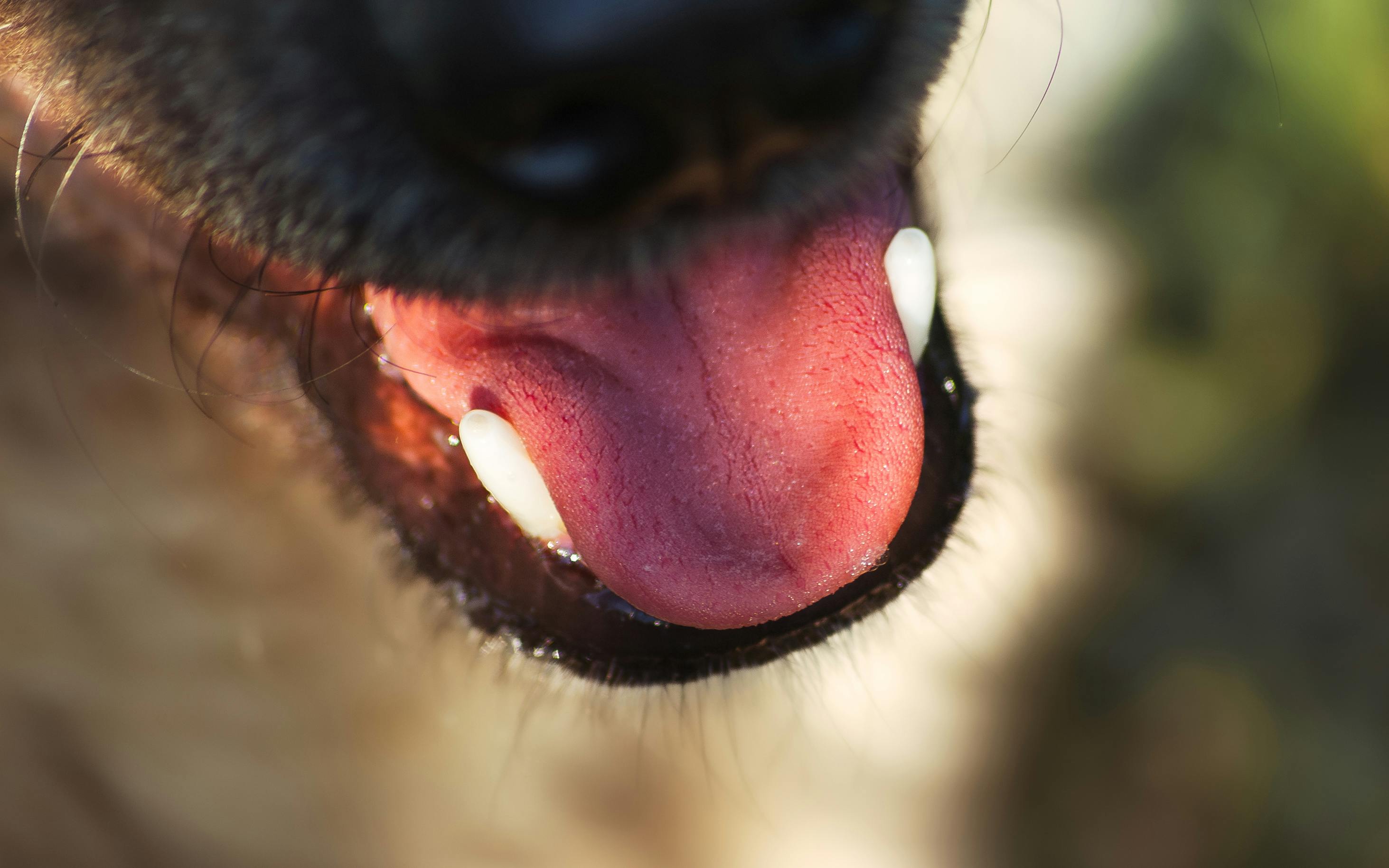
Ever wondered why your dog’s nose is always wet? You probably think it’s just a quirky feature of our furry friends, but there’s actually a lot more to it. Not only does a moist nose serve practical purposes, but it also comes with some surprising benefits that you might not have known about. Let’s dive into the fascinating world of dog noses and uncover 7 surprising benefits of your dog’s moist nose.
1. Enhanced Sense of Smell
Dogs have an incredible sense of smell, and their wet noses plays a crucial role in this ability. The moisture on their noses helps to absorb scent particles, which makes it easier for them to detect and identify smells. Research shows that dogs have up to 300 million scent receptors in their noses, compared to a human’s 5 million. This means they can sniff out things we can’t even imagine.
2. Temperature Regulation
Did you know dogs don’t sweat like humans? Instead, they regulate their body temperature through their noses. The moisture helps to cool them down, as evaporation occurs. This is especially important on hot days when dogs are more likely to overheat. So next time your dog is panting, remember that their wet nose is working hard to keep them cool.
3. Boosting Immunity
A dog’s moist nose also helps fight off infections and enhance their immune system. The moisture creates a barrier that can trap bacteria and other pathogens. When dogs sniff around, their noses can pick up harmful germs, but the moisture helps neutralize these threats. This means a healthy nose contributes to a healthier pup overall!
4. Social Interaction
Dogs use their noses as a form of communication. When two dogs meet, they often sniff each other’s noses and behinds. This is their way of gathering information about one another, like age, health, and even mood. A moist nose can indicate a dog is well-hydrated and happy, which can foster positive social interactions with other dogs.
5. Emotional Barometer
Your dog’s nose can also be a reflection of their emotional state. A moist and cool nose typically indicates that your dog is relaxed and content. Conversely, if their nose is dry and warm, it might suggest they are stressed or unwell. Paying attention to your dog’s nose can help you gauge how they are feeling and whether they need some extra love or care.
6. Natural Cleaning Mechanism
Another interesting fact about a dog’s moist nose is that it acts as a natural cleaning mechanism. The moisture on their noses can help remove dirt and debris, which can be particularly helpful after they’ve been playing outside. So, when your dog comes in with mud on their nose, it’s likely they’ve been using it to explore their environment.
7. Aiding in Healing
Finally, a moist nose can actually help in the healing process. If a dog has a minor injury, the moisture on their nose can assist in preventing infection and promoting quicker healing. The natural oils and antibodies in their nasal secretions can protect against harmful bacteria. This is why it’s essential to keep an eye on your dog’s nose when they’re recovering from an injury.
Why Do Dogs Have Wet Noses?
The question really boils down to evolution and biology. Dogs have developed moist noses over thousands of years as a means of survival. Their noses are designed to be finely tuned to their environment, helping them hunt, socialize, and regulate their health. Wet noses are just one of the many fascinating traits that make dogs so unique and beloved companions.
Quick Recap
Here’s a quick list summarizing the benefits of your dog’s moist nose:
- Enhanced sense of smell
- Temperature regulation
- Boosting immunity
- Social interaction
- Emotional barometer
- Natural cleaning mechanism
- Aiding in healing
All these facts show just how incredible our dogs really are. Their wet noses are not just cute; they serve several important functions that contribute to their overall health and well-being. The next time you give your pup a scratch behind the ears, take a moment to appreciate that wet nose and all the amazing things it does. Knowing why dogs have wet noses and the benefits can deepen your bond with your furry friend and make you appreciate them even more.
Is a Wet Nose a Sign of a Healthy Dog? Unveiling the Truth

Is a Wet Nose a Sign of a Healthy Dog? Unveiling the Truth, Why Do Dogs Have Wet Noses? Discover This Fascinating Truth!
When you see a dog, one of the first things you might notice is its wet nose. Many people wonder if a wet nose is actually a sign of a healthy dog. There’s some truth to this, but it’s not the whole story. Let’s explore why dogs have wet noses and what that means for their health.
Why Do Dogs Have Wet Noses?
Dogs have wet noses for a variety of reasons, and it’s more than just a cute feature. Here’s a breakdown of why their noses are typically moist:
Thermoregulation: One of the primary reasons dogs’ noses stay wet is to help them cool off. Dogs cannot sweat like humans; they primarily regulate their body temperature through panting and the moisture on their noses.
Scent Detection: A wet nose helps enhance a dog’s sense of smell. The moisture traps scent particles, making it easier for dogs to detect and identify odors. This is why dogs are often used in search and rescue missions or in detecting drugs.
Nasal Secretions: Dogs produce mucus in their noses. This mucus can help keep their nasal passages moist and trap dirt or allergens. A wet nose, therefore, is a sign of an active olfactory system.
Health Indicator: While a wet nose can indicate health, it’s not a definitive sign. A dog can be healthy with a dry nose, depending on various factors like the environment or the dog’s activity level.
Is a Wet Nose a Sign of Good Health?
Many pet owners believe that a wet nose is synonymous with good health, but that’s not entirely accurate. Here are some facts that illustrate this point:
Dryness Doesn’t Always Mean Illness: A dog’s nose can be dry for many reasons, including hot weather, being in an air-conditioned room, or even just waking up from a nap. A dry nose doesn’t automatically mean that the dog is sick.
Other Health Indicators: When determining if your dog is healthy, look at other factors, such as energy levels, appetite, and behavior. A wet nose alone cannot tell the whole story.
Variability: The moisture level of a dog’s nose can vary throughout the day. For example, after eating or playing, a dog’s nose might be dryer than usual.
Common Misconceptions About Dog Noses
Many myths surround the topic of dog noses. Here are some common misconceptions:
Myth 1: A cold, wet nose means a dog is healthy.
Truth: While a wet nose is often associated with health, many factors can cause a dog’s nose to feel cold or wet.Myth 2: A warm, dry nose means a dog has a fever.
Truth: A dog’s nose temperature can fluctuate; it doesn’t necessarily indicate a fever.Myth 3: All dogs have wet noses.
Truth: Some breeds naturally have drier noses due to their genetic makeup.
Practical Tips for Monitoring Your Dog’s Health
To keep your dog healthy, consider these practical tips that go beyond just checking their nose:
Regular Vet Visits: Make sure to schedule regular check-ups with a veterinarian. They can help monitor your dog’s overall health.
Watch for Changes: If you notice a sudden change in your dog’s nose moisture, along with other symptoms like lethargy or loss of appetite, consult your vet.
Hydration: Ensure your dog has access to fresh water at all times. Hydration plays a key role in their overall health.
Observe Behavior: Pay attention to your dog’s behavior. If they are acting differently, it may indicate a health issue that needs attention.
Conclusion
In conclusion, while a wet nose can be a sign of a healthy dog, it’s not the only indicator. Understanding the reasons behind why dogs have wet noses can help pet owners make informed decisions about their furry friends. Remember to look for a combination of signs when assessing your dog’s health, and don’t hesitate to consult a veterinarian if you have concerns.
How Dogs Use Their Wet Noses for Communication: Fascinating Insights
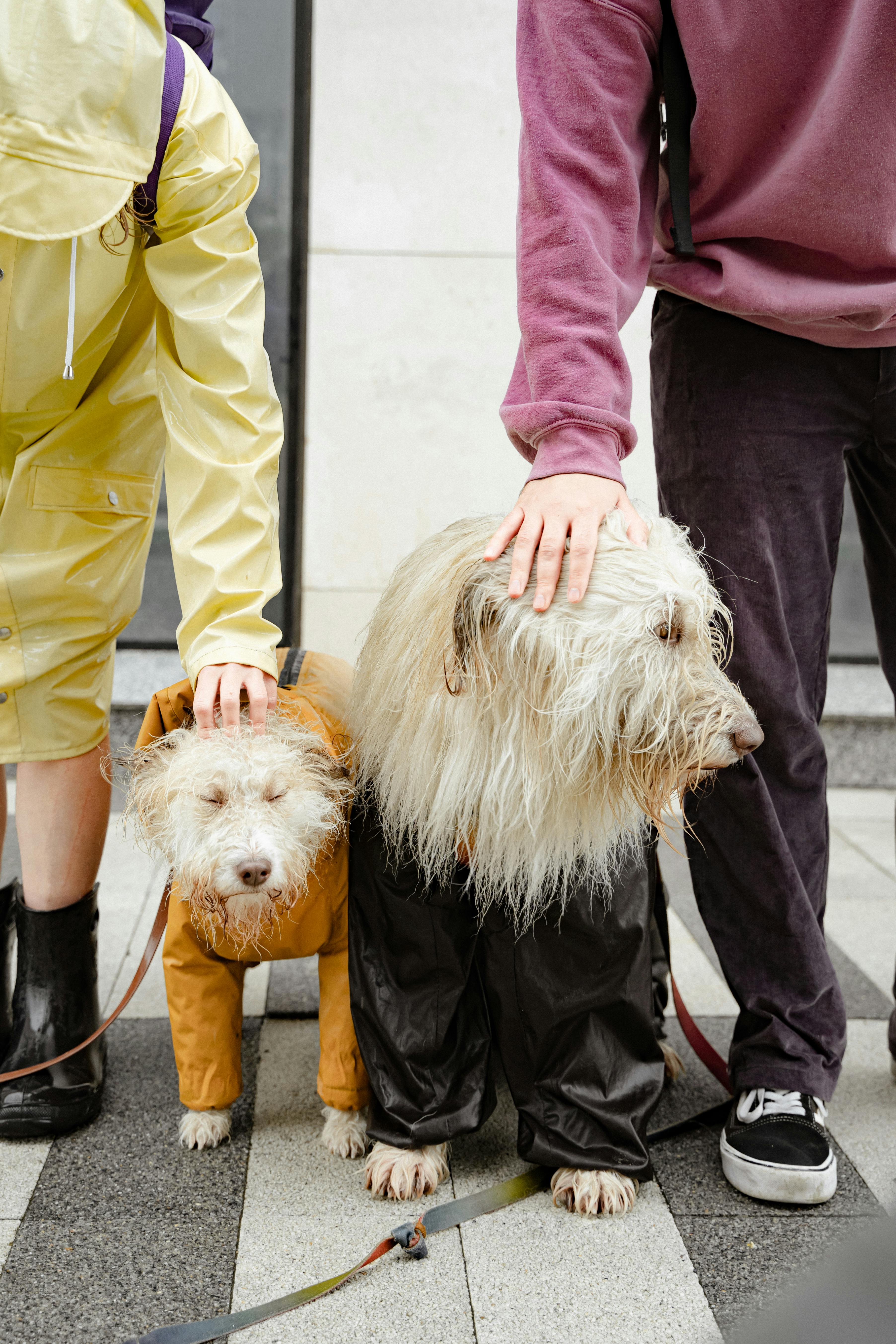
Dogs are often called man’s best friend, and one of the most fascinating features about them is their wet noses. People sometimes wonder, “Why do dogs have wet noses?” and the answer isn’t just about hygiene or health. It’s also about communication, which is pretty cool when you think about it. Dogs uses their noses to understand their world, and this includes expressing emotions and interacting with humans and other animals.
The Science Behind Wet Noses
To begin with, a dog’s nose is naturally moist for several reasons. The moisture helps them to collect scent particles from the air, which is crucial for their sense of smell. Dogs have about 220 million scent receptors in their noses, compared to a human’s 5 million. This means they can smell things we can’t even imagine.
- Moisture Helps with Smelling: A wet nose helps in capturing scent particles.
- Temperature Regulation: Dogs can also regulate their body temperature through their noses; it helps them cool down.
- Health Indicator: A wet nose can indicate a healthy dog, while a dry nose may be a sign of illness, but not always.
How Dogs Communicate with Their Noses
It’s interesting how dogs uses their noses to interact. They sniff each other’s noses and bodies as a way of gathering information. For a dog, this is like reading a newspaper or checking social media — they learn about other dogs’ diets, health status, and even emotional state.
- Greeting Ritual: When dogs meet, they often sniff each other’s noses first. This is like a friendly handshake.
- Emotional Expressions: A wet nose can indicate excitement or affection. Dogs may nuzzle you with their wet noses to show they are happy.
- Stress Signals: If a dog’s nose becomes dry, it might be stressed or feeling unwell.
Historical Context of Dogs and Their Noses
Historically, dogs were bred for specific jobs like hunting, herding, or guarding. Their wet noses were advantageous for tracking scents and communicating with humans. For example:
- Hunting Dogs: These dogs needed a keen sense of smell to locate game. Their wet noses helped them to pick up the faintest scents.
- Herding Dogs: They use their noses to guide livestock, and this nose-to-nose communication is essential in herding practices.
- Service Dogs: Many service dogs uses their noses to help people with disabilities, like detecting medical conditions.
Fascinating Facts About Dog Noses
Here are some fascinating tidbits about dog noses that might surprise you:
- Unique Prints: Just like human fingerprints, every dog has a unique nose print.
- Sense of Time: Dogs can even use their noses to sense time. They can smell changes in their owner’s scent over time, indicating when it’s time for dinner or a walk.
- Nasal Turbinates: Dogs have complex nasal structures called turbinates that help with scent processing, which is way more advanced than what humans have.
Practical Examples of Nose Communication
When a dog approaches with its nose to the ground or sniffing around, it’s typically engaged in a form of communication. Here are some practical examples:
- Sniffing Your Hand: If a dog sniffs your hand and then licks it, they might be signaling friendliness or curiosity.
- Nose Bumping: A gentle nudge with their wet nose can be a way of seeking attention or affection.
- Following Scents: If a dog starts sniffing a particular area and seems excited, they might have found something interesting, like a treat or another animal’s scent.
The Connection Between Wet Noses and Health
A dog’s wet nose isn’t just a quirky feature; it can also indicate their health condition. Here’s a simple guide:
- Wet and Cool: Usually a sign of a healthy dog.
- Dry and Warm: Could suggest fever or dehydration.
- Excessively Wet: Might indicate allergies or illness.
Being aware of these signs can help pet owners take better care of their furry friends.
Understanding why do dogs have wet noses and how they use them for communication opens up a whole new world of interaction for pet owners. From sniffing to nuzzling, their noses serve as a powerful tool for expression and understanding. So next time your dog nudges you with their cool, wet nose, you’ll know there’s much more going on than just a simple gesture. Embrace this fascinating truth about our canine companions!
The Role of a Dog’s Wet Nose in Their Sense of Smell: Explained!

Have you ever wondered why dogs have wet noses? You’re not alone! This unique feature of our furry friends is more than just a cute quirk – it plays a crucial role in their sense of smell. Let’s dive into the fascinating world of dog noses and explore the science behind their moisture, why it matters, and how it ties into their incredible olfactory abilities.
The Science Behind a Dog’s Wet Nose
Dogs have wet noses due to several reasons, primarily related to their biology and how they interact with the world around them. A dog’s nose is composed of specialized tissues that secrete moisture. This moisture helps to enhance their sense of smell, a critical survival tool for canines. Here’s how it works:
Moisture and Smell: The wetness on a dog’s nose helps to capture scent particles from the air. When these particles stick to the moisture, they become more accessible for the olfactory receptors in the dog’s nasal cavity. This is why a dog can sniff out a treat hidden in your house or find a lost toy in the yard.
Temperature Regulation: Dogs can’t sweat like humans do, so they use their noses to help regulate their body temperature. The evaporation of moisture from their noses can help cool them down, especially when they’re active or it’s hot outside.
Health Indicator: A dog’s nose can also indicate their health. Generally, a healthy dog will have a moist, cool nose. If it becomes dry or warm, it could be a sign of illness or dehydration.
Why Are Dog Noses Wet?
Now, let’s break down some reasons explaining why dog noses are wet:
Natural Secretion: Dogs’ noses secrete mucus naturally which keeps the surface moist. This secretion is a part of their anatomy and can vary from dog to dog.
Licking: Dogs often lick their noses, which helps to keep them wet. This behavior is instinctual and can also indicate a dog is curious or assessing a situation.
Environmental Factors: Weather conditions can affect how wet a dog’s nose is. For example, a dog might have a dryer nose on hot, windy days and a wetter nose on cooler, humid days.
Fascinating Facts About Dogs’ Noses
Here are some intriguing facts about dogs’ noses that you may not know:
Dogs have up to 300 million olfactory receptors in their noses, compared to about 5 million in humans. That’s a considerable difference!
The part of the dog’s brain that processes smells is 40 times larger than that of a human’s. This shows just how important smell is to them.
Some breeds, like Bloodhounds, have an incredible sense of smell that can track scents that are weeks old.
Dogs can detect certain diseases, like cancer or diabetes, just by smelling a person’s breath or skin.
Wet noses are not just for show; they can absorb pheromones and other chemical signals from the environment, offering dogs a rich tapestry of information about their surroundings.
The Importance of a Dog’s Nose in Daily Life
Understanding why dogs have wet noses and their role in their scent detection can help us appreciate our pets even more. Here’s how it impacts their daily lives:
Hunting and Tracking: Dogs are often used in search and rescue missions, police work, and hunting because of their superior sense of smell. Their wet noses help them track scents effectively.
Bonding with Humans: Dogs use their sense of smell to bond with their human companions. They can recognize their owner’s scent, which can create feelings of comfort and safety.
Behavioral Insights: A dog’s nose can tell us a lot about their mood. For instance, a dog with a dry nose might be feeling unwell or stressed, while a moist nose could indicate they’re feeling relaxed and happy.
Final Thoughts
The wet nose of a dog isn’t just an interesting trait; it serves essential functions that contribute to their survival and well-being. With their extraordinary sense of smell, dogs navigate the world in ways we can only imagine. So, next time you give your furry friend a scratch behind the ears and feel that cool, wet nose, remember the amazing biology at play. It’s a small yet crucial part of what makes dogs such incredible companions!
Can a Dog’s Nose Tell You About Their Health? Find Out Now!

Can a dog’s nose tell you about their health? This is a question many dog owners ask, and it’s actually more complicated than it seems. Dog’s noses are fascinating, and they do more than just sniff out treats or track down squirrels. So, can they also be an indicator of health? Let’s dive into this interesting topic and explore why dogs have wet noses and the importance of this unique feature.
The Basics of Dog Noses
First off, it’s worth noting that a dog’s nose is highly sensitive. They have around 300 million scent receptors, compared to about 5 million in humans. This incredible sense of smell allows dogs to detect certain diseases, find missing people, or even alert their owners to medical emergencies. But what about the moisture?
Why Do Dogs Have Wet Noses?
You might wonder, why do dogs have wet noses? Here are some fascinating facts to consider:
- Temperature Regulation: A wet nose helps dogs regulate their body temperature. When they pant, moisture evaporates from the nose, cooling them down.
- Scent Enhancement: Moisture on their nose helps capture scent particles from the air, enhancing their sense of smell. This is why a wet nose equals a more efficient sniffing ability.
- Health Indicator: A dog’s nose can change texture and wetness based on their health status. For instance, a dry, cracked nose could indicate dehydration or illness.
How to Interpret a Dog’s Nose
A dog’s nose can give you hints about their overall health, but it isn’t foolproof. Here are some common observations:
Wet and Cold Nose: This is usually a sign of a healthy dog. It means that the dog is hydrated and their body is functioning well.
Warm and Dry Nose: This could be a warning sign. It might indicate that the dog is sick or has a fever. However, not all warm noses mean illness, so it’s essential to observe other symptoms.
Nose Color Changes: If a dog’s nose changes color from black to pink, or vice versa, it could signal an issue. This can range from allergies to autoimmune diseases.
Cracked or Flaky Nose: This could indicate dehydration or a skin condition. It’s important to keep an eye on the nose texture and take your dog to the vet if it doesn’t improve.
Signs of Illness Beyond the Nose
While the nose is a good starting point, dog owners should look for other signs of health issues. Here’s a list of things to monitor:
- Change in Appetite: If your dog suddenly stops eating or drinking, it could be a sign of something wrong.
- Lethargy: If your dog is less active than usual, it might indicate illness.
- Vomiting or Diarrhea: Digestive issues can be serious and should be checked by a vet.
- Coughing or Sneezing: Respiratory issues may arise if your dog is coughing or sneezing frequently.
When to Visit the Vet
If you notice any concerning signs in addition to changes in your dog’s nose, it might be time to call your veterinarian. Here are some situations when you should definitely seek professional advice:
- If the nose remains dry for an extended period.
- If there’s discharge coming from the nose.
- If your dog shows signs of pain or distress.
- If nose color changes persist.
Fun Facts About Dog Noses
- Dogs have unique nose prints, much like human fingerprints.
- Some breeds, like Bloodhounds, have a remarkable sense of smell and are often used in search-and-rescue missions.
- Dogs can even sniff out certain types of cancer!
So, can a dog’s nose tell you about their health? Yes and no. While it can provide clues, it’s not the only indicator. Observing your dog’s behavior and physical condition is equally important.
In conclusion, a dog’s wet nose serves multiple purposes, from enhancing their sense of smell to helping with temperature regulation. Understanding the nuances of your dog’s health requires more than just looking at their nose. By paying attention to changes in their behavior, appetite, and overall demeanor, you can better ensure their well-being. Always consult a veterinarian if you have concerns about your furry companion’s health.
5 Myths About Dog Noses Debunked: What You Really Need to Know

Many people love dogs, they’re loyal companions. But there are some myths floating around about our furry friends that just ain’t true, especially when it comes to their noses. So, let’s dive into five common myths about dog noses and debunk them. And while we at it, we’ll explore the real reason why do dogs have wet noses?
Myth 1: Wet Noses Mean a Dog is Healthy
A lot of folks believe that if a dog has a wet nose, it means they’re healthy. But that ain’t always the case. A dog’s nose can be wet for several reasons, including:
- Environmental Factors: Dogs often stick their noses in water bowls or puddles.
- Excitement: When dogs are excited, their bodies produce more moisture.
- Health Issues: Sometimes, a dog might have a wet nose due to an infection or other medical condition.
So, wet noses don’t automatically mean a dog is in tip-top shape.
Myth 2: Dogs Have Wet Noses to Keep Cool
Another common belief is that a dog’s wet nose helps them regulate their body temperature. While it’s true that dogs don’t sweat like humans, their primary way of cooling down is panting. A wet nose does help with scent detection, but it ain’t a major factor in temperature control.
Myth 3: A Dog’s Nose Color Can Indicate Health
Many people think the color of a dog’s nose can tell you about their health. This is a myth. Nose color can vary widely among breeds and even individuals. Here’s a quick breakdown:
- Black Noses: Common in many breeds, doesn’t indicate anything specific about health.
- Brown or Liver Noses: Found in breeds with lighter coats, it’s natural.
- Pink Noses: Some dogs, especially those with white coats, can have pink noses. This doesn’t mean they’re sick.
So, unless there are other symptoms, a change in nose color usually ain’t a cause for concern.
Myth 4: Dogs Only Use Their Noses for Smelling
Sure, dogs have an extraordinary sense of smell, but they use their noses for more than just sniffing things out. Dogs’ noses are also involved in communication and social interactions. They can pick up scents that convey information about other dogs, people, and their environment. For example:
- Territory Marking: Dogs often sniff where another dog has been to gather information.
- Emotional Cues: Dogs can sense pheromones that indicate fear or aggression.
So, their noses are like a whole communication network!
Myth 5: A Dry Nose Means a Dog is Sick
It’s a common misconception that a dog with a dry nose is ill. However, a dog’s nose can be dry for many reasons that aren’t health-related, including:
- Weather Conditions: Hot or dry weather can lead to a dry nose.
- Sleep: Dogs can have a dry nose after a long sleep.
- Dehydration: If a dog isn’t drinking enough water, their nose may become dry.
Just like with wet noses, it’s important to look at other signs to determine if a dog is healthy or not.
Why Do Dogs Have Wet Noses? Discover This Fascinating Truth!
So, if wet noses ain’t just for health or cooling reasons, why do dogs have them? The truth is, a wet nose helps enhance their sense of smell. A wet surface captures scent particles better than a dry one. This makes it easier for dogs to detect smells in their environment.
Moreover, the moisture on their noses can also help them absorb scents better. So, it’s all about that incredible canine sense of smell!
Fun Facts About Dog Noses
- Dogs possess up to 300 million olfactory receptors in their noses, compared to about 5 million in humans.
- Their sense of smell is so powerful that they can detect certain diseases, like cancer or diabetes, just by smelling a person’s breath or skin.
- Dogs have a special organ called Jacobsen’s organ, located on the roof of their mouth, which helps them process smells.
Understanding these truths about dog noses can help enhance your relationship with your pet. Next time you notice your dog’s wet nose, remember all the incredible things it can do! So, while myths can sometimes be amusing, knowing the real facts is what really matters.
Why Do Dogs Lick Their Noses? Understanding This Common Behavior
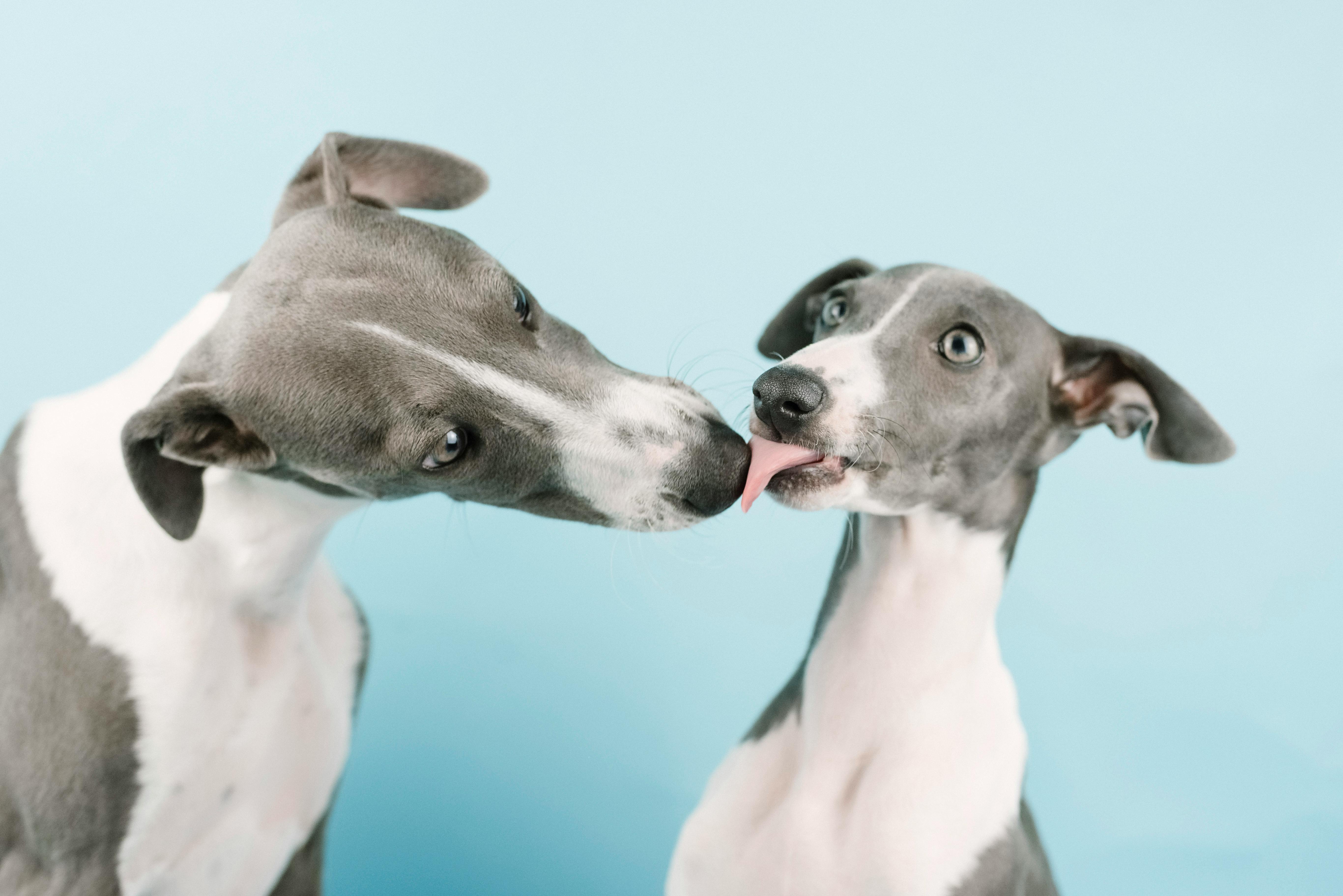
Every dog owner has probably observed their furry friend licking their nose, but have you ever pondered why dogs do this? The reasons behind this common behavior can be both simple and fascinating. In this article, we dive into the intriguing habits of dogs, particularly focusing on why they lick their noses and why those noses are often wet.
Why Do Dogs Lick Their Noses?
Dogs lick their noses for a variety of reasons, and understanding these can help us connect better with our pets. Some of the main reasons include:
Taste and Smell: Dogs have an exceptional sense of smell, and licking their nose helps them taste and analyze scents. This is how they process information about their environment.
Moisture Retention: A dog’s nose needs to be moist to effectively absorb scent particles. Licking helps keep it wet, which is crucial for their olfactory abilities.
Stress Relief: Just like humans might bite their nails or fidget when nervous, dogs may lick their noses as a calming mechanism. It can be a sign that they’re feeling anxious or uncomfortable.
Grooming Behavior: Dogs instinctively groom themselves, and licking their noses is part of their hygiene routine. It helps remove dirt or debris that may accumulate.
Communication: Sometimes, dogs lick their noses when interacting with other dogs or humans. It can be a sign of submission or an attempt to show friendliness.
Why Do Dogs Have Wet Noses?
So, why are dog noses often wet? Here’s a breakdown of the reasons:
Physiological Function: A wet nose actually helps dogs smell better. The moisture on the nose captures scent particles, allowing dogs to detect odors more effectively.
Temperature Regulation: Dogs don’t sweat like humans do. Instead, they rely on their noses to help regulate body temperature. A cool, wet nose can assist in keeping them comfortable.
Health Indicator: A wet nose is often a sign of a healthy dog. However, it’s not the only factor to consider. A sudden change in nose moisture can indicate health issues.
Fascinating Facts About Dog Noses
To further appreciate these unique characteristics, here are some interesting facts about dog noses:
Unique Patterns: Just like human fingerprints, every dog has a unique nose print that can be used for identification.
Scent Detection: Dogs have up to 300 million smell receptors in their noses, compared to about 6 million in humans. This makes them far superior in detecting scents.
Heat Sensitivity: Dogs can perceive temperature changes through their noses, which helps them detect food or other objects that may be warm.
Nasal Slits: Dogs have nasal slits that allow them to breathe and smell simultaneously, which is why they can sniff while running around.
Common Misconceptions About Dog Noses
There are many myths surrounding dog noses. Here’s a few misconceptions debunked:
Wet Nose = Healthy Dog: While a wet nose is often associated with good health, not all healthy dogs will have a wet nose.
Dry Nose = Sick Dog: A dry nose doesn’t automatically mean a dog is ill. Environmental factors like heat or dehydration can affect nose moisture.
Dogs Only Lick When Hungry: Dogs may lick for various reasons, not solely out of hunger. It’s important to observe their behavior holistically.
Practical Tips for Dog Owners
If you’re a dog owner, you might wonder how to ensure your furry companion stays healthy. Here are a few practical tips:
Regular Vet Check-ups: Keep up with routine veterinary visits to monitor your dog’s health, including nose condition.
Hydration: Ensure your dog has access to fresh water, which can help maintain moisture in their nose.
Watch for Changes: If you notice your dog’s nose becomes excessively dry or changes color, consult your vet.
Minimize Stress: If your dog seems to lick their nose excessively, find ways to reduce stress in their environment.
Observe Behavior: Pay attention to when and why your dog licks their nose. It might provide insight into their emotional state.
Understanding why dogs lick their noses and why they are often wet can deepen the bond between you and your furry friend. By recognizing these behaviors, you can better care for your pet and respond appropriately to their needs. Embracing the quirks of our canine companions is part of what makes pet ownership so rewarding.
Wet Nose vs. Dry Nose: What Your Dog’s Nose Really Says About Them
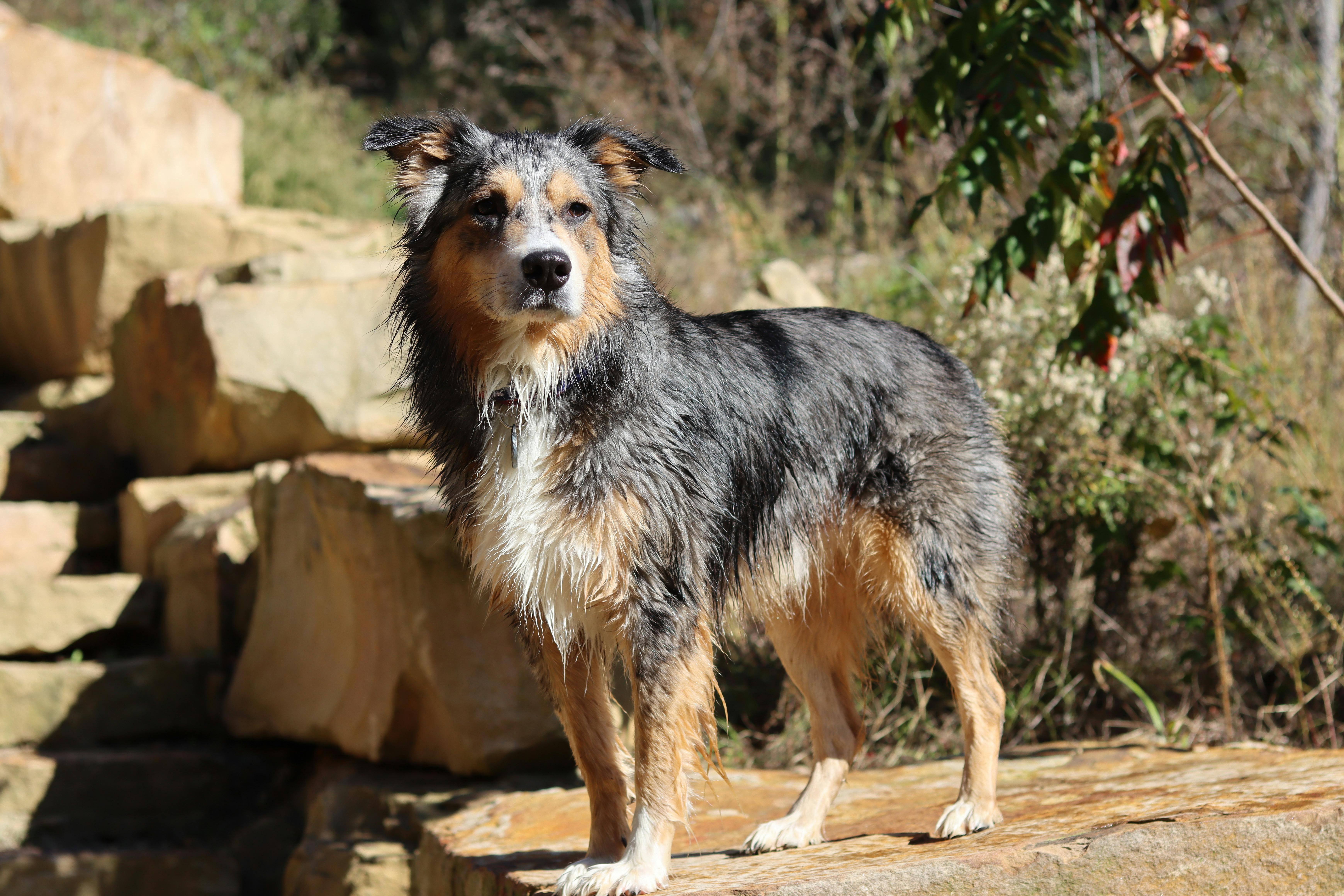
When it comes to our furry friends, their noses often tell us more than we realize. You might’ve noticed that your dog’s nose can be wet or dry, and you probably wonder what that really means. Are there health implications tied to these variations? Or is it just one of those quirky things about dogs? In this article, we dive into the fascinating world of canine noses. We explore the reasons behind why do dogs have wet noses and what the differences between wet and dry noses could say about your pup.
The Science of Dog Noses
Dogs possess an incredible sense of smell, far superior to that of humans. Their noses contain up to 300 million smell receptors, compared to just about 6 million in humans. This makes them exceptional when it comes to sniffing out scents. But why is their nose wet most of the time? Here are a few reasons:
- Cooling Mechanism: A wet nose helps dogs regulate their body temperature. The moisture evaporates, cooling them down just like sweat does for humans.
- Enhanced Smell: The wetness helps trap scent particles, making it easier for dogs to analyze odors. Their noses work better when they are moist.
- Health Indicator: A wet nose can often indicate that a dog is healthy. However, it’s not the only factor to consider.
Wet Nose vs. Dry Nose: What’s the Difference?
It’s helpful to understand the differences between a wet nose and a dry nose. Many dog owners fret when they notice a change in their pet’s nose. Here’s a quick breakdown:
| Aspect | Wet Nose | Dry Nose |
|---|---|---|
| Temperature | Usually cool | Warmer than normal |
| Health Indicator | Often indicates good health | Could indicate dehydration or illness |
| Smell Sensitivity | More sensitive | Less sensitive |
Why Do Dogs Have Wet Noses?
The wetness of a dog’s nose can be attributed to several factors. Firstly, dogs lick their noses often. This habit keeps their nostrils moist and helps them pick up scents more effectively. Secondly, dogs have a special gland called the nasal gland that secretes a watery substance. This secretion helps to enhance their olfactory abilities.
Also, let’s not forget about the environmental factors. Weather plays a big role. In humid conditions, your dog’s nose is likely to be wetter. Conversely, during dry and hot days, you might notice it getting drier.
Common Misconceptions
There are some common myths surrounding dog noses. It’s important to dispel these myths to avoid unnecessary worry. Here are a few:
- A dry nose means my dog is sick: While a dry nose can indicate that something is wrong, it isn’t an absolute sign of illness. Dogs can have dry noses for many reasons, including dehydration or being in a warm environment.
- All dogs have wet noses: Not all dogs have the same nose characteristics. Breeds like Bulldogs may naturally have drier noses.
- Temperature is the only indicator: While temperature can be a good sign, it’s not the only way to gauge your dog’s health. Behavior, appetite, and overall demeanor are also crucial.
When to be Concerned
So, when should you be worried about your dog’s nose? Here are some signs to watch for:
- Persistent Dryness: If your dog’s nose remains dry for an extended period and is cracking or peeling.
- Change in Color: If the color of the nose changes dramatically, it might indicate a problem.
- Behavioral Changes: If your dog becomes lethargic or shows a lack of interest in food or play.
Practical Tips for Dog Owners
Caring for your dog’s nose is easier than you think. Here are some tips to keep your pup’s nose healthy:
- Hydration: Ensure your dog has plenty of fresh water to drink.
- Humidity Control: Use a humidifier in dry conditions to help maintain moisture in the air.
- Regular Check-ups: Regular vet visits can help catch any potential issues early.
Remember, your dog’s nose is just one aspect of their overall health. Keeping an eye on their behavior and physical condition is essential.
In the end, whether your dog has a wet nose or a dry nose, it’s important to understand that these variations are normal. They provide insight into their health and well-being. So the next time you check in on your furry friend, don’t just look at their nose; consider the whole package—because every little detail matters!
How to Keep Your Dog’s Nose Healthy: Essential Tips for Pet Owners
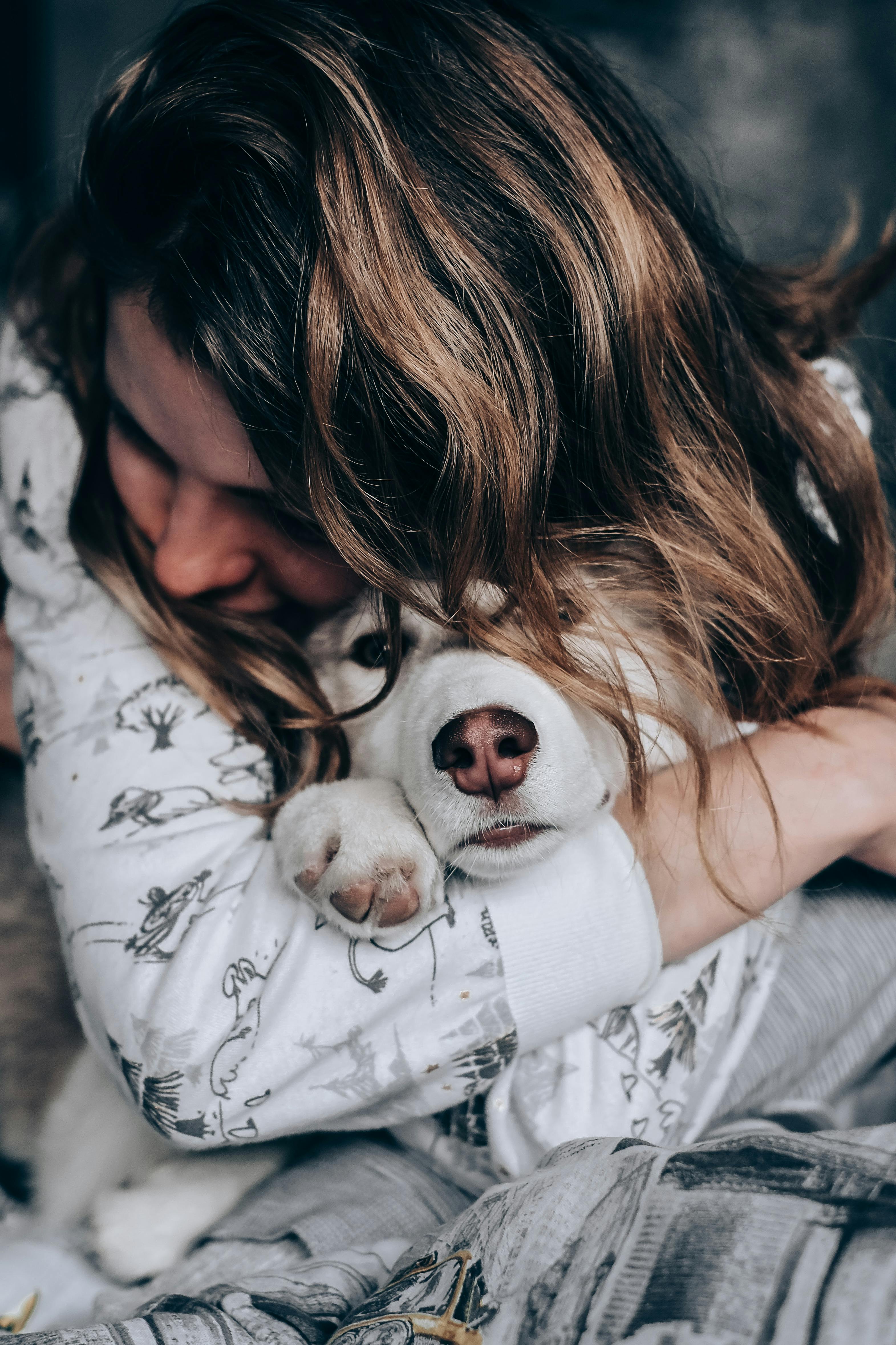
Every dog owner knows that wet noses are just part of the deal. But have you ever wonder why do dogs have wet noses? It’s not just a cute quirk; there’s a fascinating truth behind it! Keeping your dog’s nose healthy is important too, so let’s dive into some essential tips for pet owners.
Why Do Dogs Have Wet Noses?
Dogs have wet noses for several reasons that relate to their biology and behavior. Here’s some of the most significant points:
Sense of Smell: A wet nose helps dogs detect scents more effectively. The moisture on their noses captures scent particles from the air. This makes them better at sniffing out everything from food to friends!
Cooling Mechanism: Dogs don’t sweat like humans do. Instead, they cool down primarily through their noses and mouths. A wet nose might help them regulate their body temperature.
Health Indicator: A dog’s nose can give clues about its health. A healthy nose is typically moist and cool, while a dry, cracked nose may indicate dehydration or illness.
Tips for Keeping Your Dog’s Nose Healthy
Taking care of your dog’s nose is pretty simple. Here are some essential tips to keep it in tip-top shape:
Hydration is Key: Always make sure your dog has access to fresh water. Dehydration can lead to a dry nose, which ain’t good!
Avoid Sunburn: Dogs with light-colored noses are especially prone to sunburn. Use pet-safe sunscreen if your dog spends a lot of time outdoors. Yes, they can get sunburned just like us!
Regular Check-Ups: Make sure your vet checks your dog’s nose during regular visits. They can spot potential issues early.
Keep it Clean: Gently clean your dog’s nose with a damp cloth. This remove dirt and debris that can cause irritation.
Watch for Changes: If you notice any unusual changes—like cracking, swelling, or excessive dryness—consult your vet. Early detection can lead to better outcomes.
Common Nose Problems in Dogs
Just like humans, dogs can experience a range of nose problems. Here’s a list of some common issues:
Nasal Dermatitis: This is inflammation of the skin on the nose, often caused by allergies.
Hyperkeratosis: A thickening of the skin on the nose, which can lead to cracks and bleeding.
Nasal Tumors: Though less common, tumors can grow in the nasal cavity, leading to issues with breathing and nose discharge.
Fun Facts About Dogs’ Noses
Did you know that a dog’s nose print is as unique as a human fingerprint? Here are some more fun facts:
Dogs Have More Smell Receptors: A dog’s nose can have up to 300 million smell receptors, compared to about 5 million in humans. That’s a lot of sniffing power!
Color Variations: Dog noses come in various colors, including black, brown, and even pink! The color of a dog’s nose can be influenced by breed and genetics.
Temperature Sensitivity: A dog’s nose can also detect temperature changes in their environment, which helps them identify food that’s either too hot or too cold.
Nose as a Communication Tool: Dogs often use their noses to communicate with other dogs. They can gather a lot of information about another dog’s health, mood, and even diet just by sniffing.
How to Monitor Your Dog’s Nose
Monitoring your dog’s nose health doesn’t have to be difficult. Here’s an easy checklist you can follow:
Daily Observations: Spend a few moments each day checking your dog’s nose. Look for moisture, color, and any signs of irritation.
Keep a Journal: If you notice changes, write them down. This can be helpful information for your vet.
Routine Vet Visits: Make sure to keep up with regular vet appointments. They can provide professional evaluations.
In summary, understanding why do dogs have wet noses and how to keep them healthy can greatly improve your furry friend’s quality of life. It’s an essential part of being a responsible pet owner. So, next time you give your dog a scratch behind the ears, remember to check that adorable, wet nose too! Your pup will thank you for it!
Conclusion
In conclusion, the wet noses of dogs serve multiple vital purposes that contribute to their overall health and well-being. As we discussed, a dog’s moist nose helps enhance their sense of smell, allowing them to detect scents more accurately, which is crucial for their communication and interaction with the world around them. Additionally, the wetness helps regulate their body temperature and can even indicate their general health status. While it’s common for a dog’s nose to feel cool and damp, variations can occur based on environmental factors and individual health conditions. Understanding the significance of a dog’s wet nose allows us to better appreciate our furry companions. If you notice any unusual changes in your dog’s nose, it’s always wise to consult with a veterinarian. Embrace the quirks of your canine friend, and remember that every detail, including their wet nose, plays a role in their unique charm.

